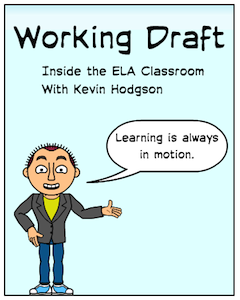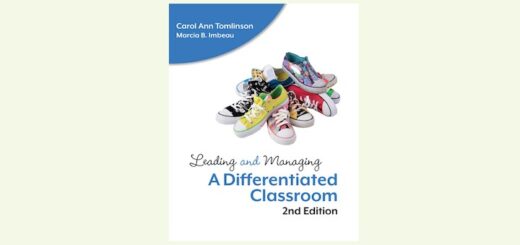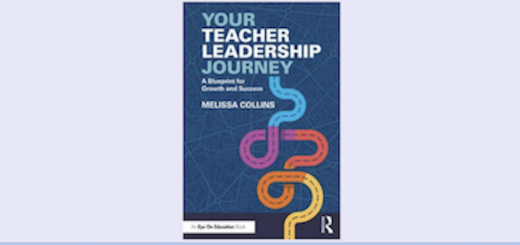Empowering Students as Digital Leaders
A MiddleWeb Blog

The conundrum for many teachers? How do we harness the opportunities for global reach, online collaboration, and authentic audiences into a constructive reality for learning?
How do we engage and nurture a generation of future leaders in the classrooms of the present?
Jennifer Casa-Todd explores these issues, and more, in her recent book entitled Social LEADia: Moving Students from Digital Citizenship to Digital Leadership.
Casa-Todd, a teacher-librarian in Ontario, Canada, provides many concrete examples of young people making a positive change and difference in the world, through the lens of social media and technology. She argues that these emerging platforms and connections give voice to young people, and young leaders, in ways that can and should be tapped by educators.
She also argues that we need to not settle for young people as mere “digital citizens” in online spaces. Instead, we need to help them transition into “digital leaders” as much as possible, turning their interaction and their ideas into reality.
I reached out to Casa-Todd and asked her some questions that were on my mind after reading Social LEADia, and she generously responded to all my queries through a shared Google Document, offering insights into her thinking behind the book and her ideas for teachers in the classroom.
You work to reframe and replace the term “digital citizenship” with “digital leadership.” Can you explain how that shift opens up different opportunities and lines of inquiry for students and educators?

Jennifer Casa-Todd
I don’t replace it as much as I offer the digital leadership framework as a better way to get at digital citizenship. I do believe that we need to teach our students the elements of Digital Citizenship. I really like OSAPAC’s (Ontario Software Acquisition Program Advisory Committee) categories for example: Communication, Critical Thinking, Health & Protection, and Communication.
Digital leadership, “using the vast reach of technology, especially social media, to improve the lives, well-being of others” (Couros, 2013), is a mind-shift change which allows us to go beyond being ethical and responsible online to having students lead using social media in order to make the world a better place.
The fact is, our typical method of teaching digital citizenship is to focus on cyber-safety and on what not to do. When students set out to lead using social media, we can teach digital citizenship in context and show them what they can and should do.

I think focusing on digital leadership gives us a more explicit and proactive path to using social media in the classroom and in schools, which just isn’t happening with our current digital citizenship model.
What qualities or aspects do you look for when showcasing examples of “digital leadership”?
The students that I have met and who I feature in the book use social media to learn and share their learning, support or promote causes that are important to them, and make a point of being a positive influence on others. They are doing good in the world and share that positivity online as well. The teachers I feature do the same.
What advice might you give an educator who reads your book and thinks, that’s what I want my students to be doing? What is a good entry point for this kind of student engagement in meaningful action?
My advice would be to take just one idea that resonates – that they think might work with the students in front of them. Start with curriculum expectations and ask, “How might I use the vast reach of technology and/or social media to make this lesson come alive for students?” This means being flexible and open to connecting to experts, organizations, and other classes to create learning experiences, not just lessons.
A really great place to start would be the @TeachSDGs site because of the many entry points for teachers. I also think it’s important to listen to your kids and know what they are currently doing. You may be surprised at some of the ways in which your students are exemplifying digital leadership outside of school.
Your book focuses a lot on student voice and student activism. I really appreciated the student profiles throughout the book. Why did you make this such a focus of what you were doing in the book?
Honestly, it was my “why.” I think we speak a great deal about student voice, but then we don’t actually listen to what they have to say or recognize that they are doing lots of learning on their own. I was meeting these awesome kids (and educators), and I wanted to celebrate them and not speak through them. I wanted to show people that some of the assumptions that we make about “kids these days” are in fact quite wrong.
I think that if we are going to change the current trajectory of what social media looks like in school, we need to include social media in our teaching and learning practices and reshift the current narrative.
You are pretty upfront about all of the pitfalls and unexpected elements that might happen when educators help students get connected with technology. What message might you send to wary educators, whose first impulse is to be a “gatekeeper” on technology use with students?

I have lots of tips at socialleadia.org and on my blog jcasatodd.com. I use these three guidelines for myself:
- Do not engage in negativity (especially with someone who is anonymous or isn’t a verified account).
- Ask clarifying questions rather than make statements.
- Remember that there is a person on the end of the screen whose perspective is impacted by their life experiences.
I would also suggest (as I do in the book) to plan and talk about what might go wrong so that you react calmly and engage in a “think aloud” as you deal with the situation. These are all important role-modeling opportunities and teaching moments for students.
How can schools better engage parents and families in these kinds of discussions? What’s your best piece of advice for educators in reaching out to the community on Digital Leadership issues?
Parent nights are great and important, but truthfully, social media is an excellent tool for communicating with parents. Find out where your parents and grandparents and students are in highest numbers and start there.
Don’t assume that they are going to be against the use of technology and social media for digital leadership; a Common Sense media parent survey I read as part of my research for the book said that 94% of parents supported the use of technology for learning. Respect their wishes. If initially they aren’t comfortable with kids’ faces online, then ensure you include their children in the most appropriate ways while parents’ comfort levels increase.
Use social media to share and celebrate the awesome happenings in your school or classroom and invite parents to learn with you and their children. In every case I have seen, parents are so appreciative of having a window into their child’s classroom.
Hear Jennifer Casa-Todd talk about the ideas in her book in this interview with George Couros and Katie Martin at IMMOOC.































